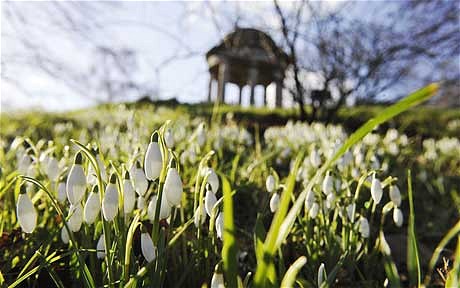With the frigid temperatures outside, the last thing on your mind might be gardening. However, there are actually some things you can do this month to prepare your garden for the spring.
Start Spring Planting*
Roses. Get roses in the ground now so they’ll be established before hot weather arrives. Choose bare-root roses for all but the warmest parts of the South. In the warmest areas, select container-grown plants.
Veggies. Plant potatoes, onions, lettuce, and spinach in all but northernmost areas. In northern areas of the South, wait a few weeks.
Trees. Add trees to your landscape this month. Select trees that are compatible with your soil type. Consult your extension service or a knowledgeable local garden retailer. Plant bare-root trees unless you garden in the warmer reaches of the region. Container-grown trees are a better option for the warmer areas.
Bedding plants. Set out cool-season annuals in cooler areas. Because cool-season annuals tolerate frost, they can be planted in areas where temperatures may drop. Lobelia, pansy, dianthus, and snapdragon are all good options.
Perennials. Create pots of spring-blooming perennials to stage an instant show in your garden. Candidates include Louisiana phlox, daylily, columbine, or purple coneflower.
Choose What to Prune*
Roses. When all danger of frost is past, prune roses. Cut any canes that are diseased, damaged, or dead. Remember to place cuts about one-quarter inch above an outward-facing bud.
Trees. Many trees can be pruned now. Wait to prune spring-flowering trees until after they flower. For fruit trees, contact the cooperative extension office to learn how to prune to enhance fruit yield. Choose early summer to prune maples or birches; if pruned now, these trees bleed sap profusely. Also hold off on pruning oaks and walnuts until early summer to avoid wilt disease.
Shrubs. Give shrubs a late winter shape-up. Prune branches to reduce height or direct growth. Thin the twiggy growth from the interior of shrubs. Prune spring-blooming shrubs after flowering. This includes Peegee hydrangea, kerria, rhododendron, Clethra, and weigela.
*Source for tips: Better Homes & Gardens

